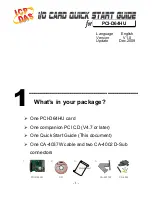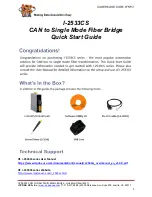
16
VIEGA 1-800-976-9819
PI-16015-03/09
Establish the problem. Get as much
information from the customer as
possible about the problem. Is there
too much heat, not enough heat, or
no heat? Is the problem only in one
particular zone or area of the building
or does the problem affect the entire
system? Is this a consistent problem
or only intermittent? How long
has the problem existed? This
information is critical in diagnosing
the problem.
Understand the sequence of
operation of the system. If a
particular zone is not receiving
enough heat, which circulators or
valves in the system must operate in
order to deliver heat to the affected
zone? If the zone is receiving too
much heat, which pumps, valves, or
check valves must operate in order
to stop the delivery of heat?
Press the
test
button on the control
and follow the control through the
test sequence as described in the
Testing section. Pause the control as
necessary to ensure that the correct
device is operating as it should.
Sketch the piping of the system.
This is a relatively simple step that
tends to be overlooked; however,
it can often save hours of time in
troubleshooting a system. Note
flow directions in the system paying
close attention to the location of
circulators, check valves, pressure
bypass valves, and mixing valves.
Ensure correct flow direction on all
pumps. This is also a very useful
step if additional assistance
is required.
6 troubleshooting
When troubleshooting any heating
system, it is always a good idea to
establish a set routine to follow. By
following a consistent routine, many
hours of potential headaches can be
avoided. Below is an example
of a sequence that can be
used when diagnosing or
troubleshooting problems in
a hydronic heating system.
Document the control for future
reference. Before making any
adjustments to the control, note
all of the items that the control is
currently displaying. This includes
items such as error messages,
current temperatures and settings,
and which devices should be
operating as indicated by the LCD.
This information is an essential step
if additional assistance is required to
diagnose the problem.
Isolate the problem between the
control and the system. Now that the
sequence of operation is known and
the system is sketched, is the control
operating the proper circulators and
valves at the correct times? Is the
control receiving the correct signals
from the system as to when it should
be operating? Are the proper items
selected in the menus of the control
for the device that is to be operated?
Test the contacts, voltages, and
sensors. Using a multimeter, ensure
that the control is receiving adequate
voltage to the power terminals as
noted in the technical data. Use
the multimeter to determine if the
internal contacts on the control
are opening and closing correctly.
Follow the instructions in the Testing
the Wiring section on page 11 to
simulate closed contacts on the
terminal blocks as required. Test the
sensors as described on page 15.
What to do if the building
temperature is incorrect:
Underheating:
If the building is too cool during
cold weather, this indicates that the
upper portion of the programmed
heating curve is too low, or that the
supply water high limit (MIX MAX)
has been reached. If the supply
temperature is close to MIX MAX,
then this setting must be increased
to provide more heat (if possible
without damaging floors). Otherwise
increase the MIX DSGN temperature,
which will increase the supply water
temperature (by increasing the slope
of the heating curve).
If the building is too cool in warm
weather, increase the value of the
ROOM setpoint in the Adjust menu.
This will shift the heating curve up to
provide higher water temperatures.
overheating:
If the building is too warm during
cold weather, decrease the value of
the MIX DSGN setting in the Adjust
menu. This will reduce the slope
of the heating curve, providing less
heat to the building at low outdoor
temperatures.
If the building is too warm during
warmer weather, reduce the value
of the ROOM setpoint in the adjust
menu. This will shift the heating
curve downward to reduce
water temperatures.
tRoUBLEsHootInG - CHAPtER 6
















































